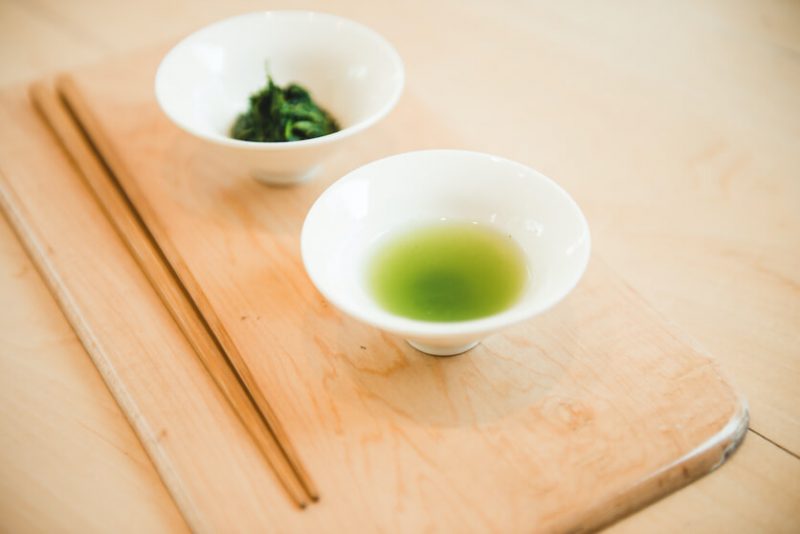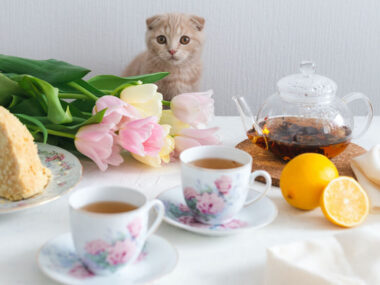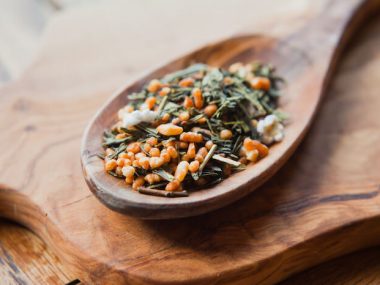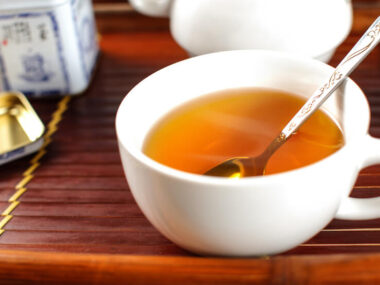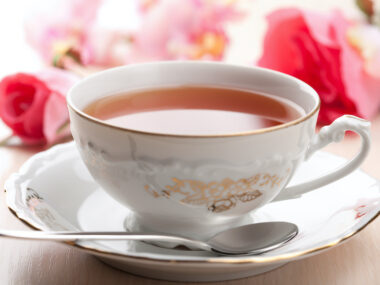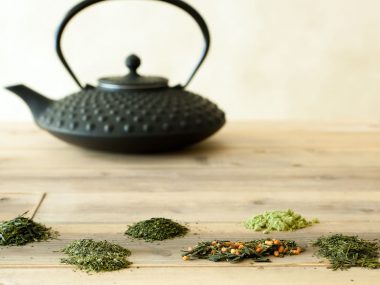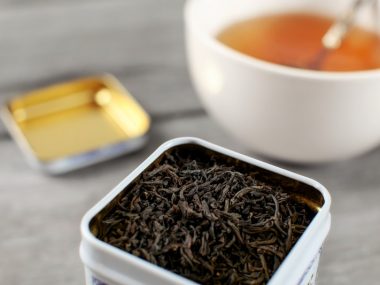We have another tea that is veiled behind a process rather than its ingredients. This tea provokes something deep within us that only the Japanese can understand. What’s the mystery behind Sencha tea?
Table of Contents
What Is Sencha Tea?
Sencha is a term referred to for specific green teas processed by a specific method of steaming. When you hear or see a tea that mentions “Sencha,” you’ll know it is a steamed green tea. Sencha is a Japanese cultural staple that brings people together.
Sencha tea is eloquently described in “Japanese Tea Culture: Art, History Practice.”
“The spoken language is abolished from certain portions of the tea gathering, replaced by focused and choreographed interactions that constitute a shared performance. The movements of preparing, serving, and drinking tea are physically internalized.”
Are There Different Types Of Sencha Tea?
There are four types of Sencha-processed teas. Each type is steamed for a certain amount of time to produce its distinct flavor. All Senchas typically come from the first or second flush.
Shincha Sencha
This Sencha is also known as “Ichibancha.” It is steamed and rolled to produce the sweetest flavor of Senchas. Hints of nutty, slight fruitiness are also found hiding in the overall bright sweetness.
Asamushi Sencha
This Sencha is lightly steamed to produce a delicate, clean, umami/vegetal flavor. It undergoes a short 30-minute steam, whereas others are steamed for a longer amount of time.
Chumushi Sencha
Chumushi Sencha undergoes medium steaming, which produces a stronger vegetal-flavored tea. It tends to be more tannic compared to Shincha or Asamushi.
Fukamushi Sencha
Fukamushi Sencha is steamed for the longest amount of time, between 80-200 seconds. This longer steaming time brings out a robust buttery-bodied tea that’s very aromatic.
Sencha Tea Background
The Global Japanese Tea Association provides an interesting background that surrounds Sencha tea. This tea was developed in 1738 by Nagatani Souen (a tea manufacturer). He endured 15 years of trial and error to perfect the Sencha processing method.
Souen’s Sencha tea was first sold in Tokyo and took off like wildfire, becoming a Japanese favorite. He had come up with a processing method that produced a green tea favored for hundreds of years in Japan and ranking as the most consumed Japanese tea today.
The Sencha Processing Method
Green tea produced by the Sencha method undergoes steaming. During a flush, the tea leaves are brought back to a warehouse, where oxidation is stopped by steaming them. Steaming is the most common method used for Japanese green teas.
Once the tea leaves have been steamed, they go to be cooled and then rolled. During these processes, Sencha’s rolled-up, needle-like appearance begins to take shape. It’s their rolled-up appearance that makes it easily identifiable.
Shading
Some tea leaves harvested for the Sencha method will have either been “shaded” or exposed to the sun just before a flush (harvest). Higher grade teas are often shaded to produce a tea rich in theanine. Theanine goes on to become catechins — a constituent in tea that causes a bitter/astringent taste. Shading prevents theanine from converting to catechins, which produce a less bitter/astringent tea.
Flushes Of Sencha Tea
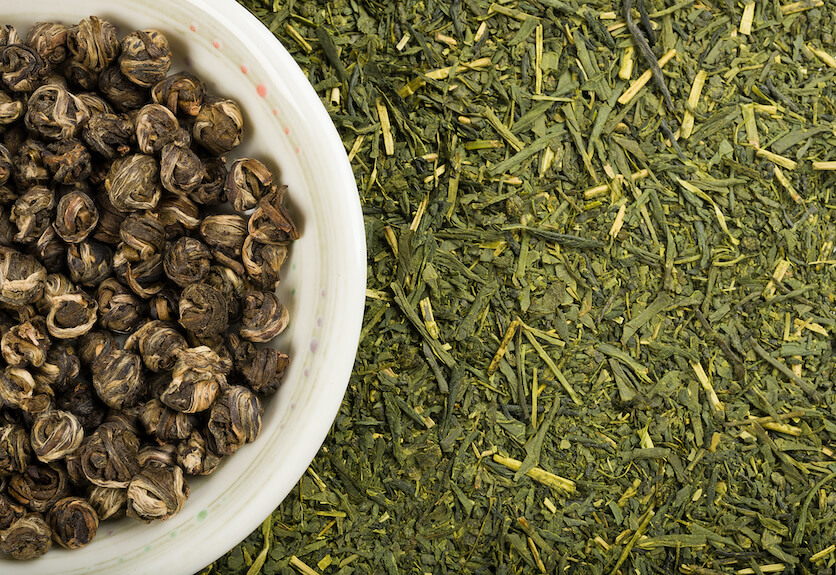
When we mention “flushes,” we are referring to the time of harvest. Pickers are sent out into the fields to pick tea leaves at precise times of the year. It’s these flushes that play a role in how a Sencha tea will taste.
1st Flush – Spring
- This flush (harvest) produces the most prized and expensive tea.
- Occurs in April/May.
2nd Flush – Summer
- This flush (harvest) produces a lower grade tea.
- Occurs in June/July.
3rd Flush – Late Summer
- This flush (harvest) produces a lower grade tea.
- Occurs in August/September.
4th Flush – Autumn
- This flush (harvest) produces the very low-grade tea used in tea bags and bottled teas.
- Occurs in September/October.
5th Flush – Late Autumn
- This flush (harvest) produces the lowest grade tea used for coarse, roasted teas such as Hirabancha/Kyobancha.
- Occurs Oct/Nov.
What Is Sencha Tea Good For?
In Japan, Sencha tea serves as the catalyst for socializing. However, there are some considerable health benefits according to a published research article entitled, “Green Tea Quality Evaluation Based on Its Catechins and Metals Composition in Combination with Chemometric Analysis.” The article mentions green tea as having the most “active and rich” polyphenols. There is a broad spectrum of bioactive health benefits.
What Does Sencha Tea Taste Like?
Green tea, in general, is known to be earthy tasting. The flavor of Sencha tea is dependent upon how long it is steamed for. The longer it’s steamed, the stronger and more vegetal-tasting it will be.
Universally, Sencha flavor has been said to be herbal, grassy, sweet, astringent, citrusy, floral, savory, and slightly fruity.
What Is The Difference Between Sencha and Green Tea?
Sencha is a green tea, and because of this, it contains many of the similar elements and constituents found in other green teas. What sets Sencha apart from those other green teas is when the harvest occurs, whether or not it is shaded, the fact that it’s steamed rather than pan-fried/heated/baked, health benefits, price, flavor, and brewing method.
The beauty of any tea is built around each of the keypoint differences noted above. Other Japanese teas have merit when it comes to flavor, benefits, and cost.
Gyokuro Tea
- Shaded
- Noteworthy Characteristic is its seaweed flavor.
Tencha Tea
- Shaded
- Used to make Matcha powder
- Sweet tasting
Bancha Tea
- Harvested later and is more affordable.
- Nutty tasting
- Pan-fried
- Toasty flavor with hints of caramel
Genmaicha
- Blend of Bancha and Sencha with grains of rice.
- Nutty, roasted flavor
Matcha Tea
- Powder made from Tencha
- A brush is used to create a bright green frothy green tea
How Much Caffeine Is In Sencha Green Tea?
You can expect to have about 20-30 mg of caffeine in a six-ounce cup of Sencha tea. Compared to black teas, that’s about 50% less caffeine!
Can I Drink Sencha Tea Every Day?
We don’t have the medical expertise to recommend or advise you on whether Sencha tea is safe to consume daily or not. If you have any medical conditions, it’s best to consult with your healthcare provider before consuming any tea. Tea may cause side effects, adverse reactions, interact with medications or worsen existing medical conditions.
Sencha Tea Benefits
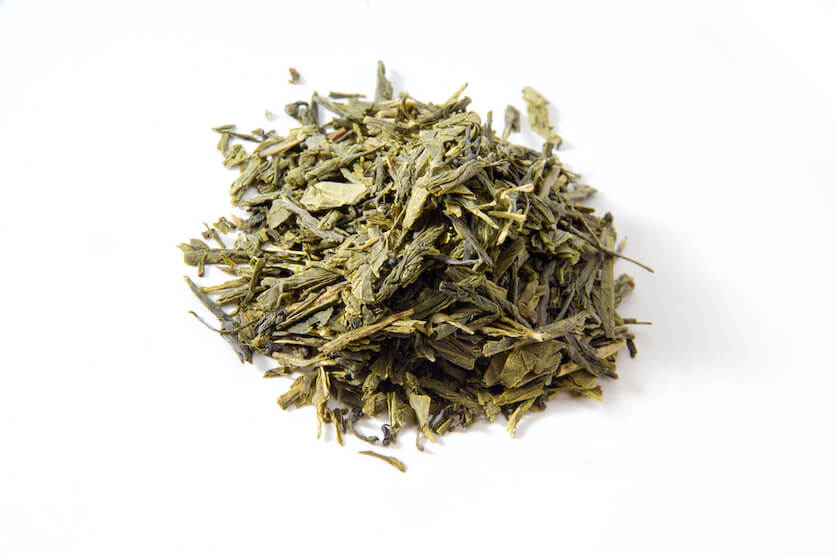
According to BioMed Central, green tea may have the potential to inhibit some viruses, infections, boost the immune system, help in reducing chronic diseases, and promote bone health.
A published research article entitled, “Green Tea Quality Evaluation Based on Its Catechins and Metals Composition in Combination with Chemometric Analysis,” green tea helps to prevent heart disorders. Sencha tea was found to have high levels of zinc which helps boost metabolism and immunity. Other Japanese green tea samples proved beneficial as an antioxidant because of high levels of catechins (a constituent in tea.)
Researchers studied the effects of green tea and weight loss (“Green tea catechins, caffeine, and body-weight regulation.) They found that green tea constituents help to optimize metabolism for weight loss. Furthermore, green tea had synergistic bioactivity thermogenesis and oxidation of fat.
Lastly, a published study (“Tea and Health: Studies in Humans”) mentions that consuming tea helped to promote better heart health and metabolism. Beneficial effects also included better insulin signaling for those with diabetes, which helped reduce inflammation from arthritis and rheumatoid arthritis.
Why Is Sencha Tea Bad For You?
Adverse effects were indicated in a study (“Beneficial effects of green tea: A literature review”), noting that high amounts of green tea intake may cause unpleasant side effects due to consuming too much caffeine. It further recommends that those with “major” heart conditions should not drink green tea. Pregnant or nursing mothers should not consume more than two cups of green tea per day.
How To Make Sencha Green Tea
Sencha tea should not be brewed with boiling water because it causes the tea to have a more astringent taste and have higher levels of caffeine. When making Sencha tea, it’s important to be mindful of the water temperature.
Ingredients:
- 2 teaspoons of loose-leaf Sencha tea
- 2 cups of water
Directions:
- Heat the water until it reaches 160 degrees (F.)
- Remove from the heat.
- Place the loose-leaf tea into an infuser.
- Drop the tea-filled infuser into the warm water.
- Cover and allow to steep for 2 minutes.
- Remove the infuser.
- Pour the tea into a teacup and enjoy!
Tip: Prewarming your teapot and teacups help to keep your tea at a more consistent temperature. This is done by bathing the teapot and teacup in warm water.
“SEN-fully” Good!
Sencha green tea is a must-try. Enjoy a pot of it with a friend just as the Japanese do and savor the tea, its numerous benefits, and the company of good friends. When sipping this tea, you embody the stillness that teatime provides.
